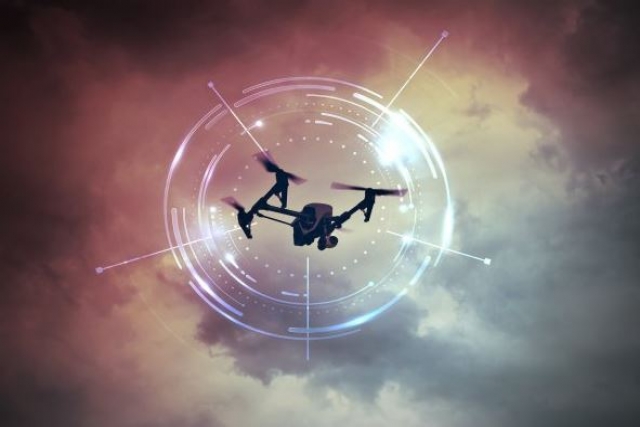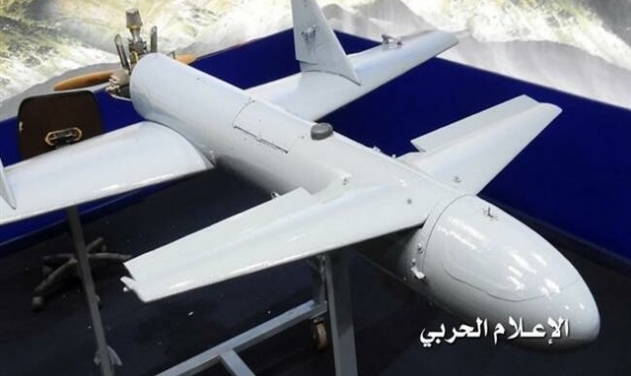Drone Counter-measures to Gain Prominence At Dubai Air Show 2019

Counter-measures to intercept and destroy malicious drones such as the type that attacked Saudi Arabian oil facilities last week would be in prominent focus at Dubai Air Show 2019.
Russia has announced it will present electronic warfare systems and latest air defense systems at the air show to defeat drones.
“Widespread use of UAVs creates new security challenges. Recent events in the world show that the effective fight against UAVs is very important to ensure the protection of places of special importance, such as strategic transport hubs, infrastructure of large enterprises in the oil and gas sector and nuclear energy,” said Sergei Chemezov, General Director, Rostec.
"Rostec enterprises will exhibit drone countermeasures such as Pantsir & Sosna air defense systems, Igla portable anti-aircraft missile systems, ‘Willow’ and others at the Dubai air show. We will also showcase electronic warfare systems that can defeat individual UAVs to provide comprehensive protection for transport hubs, industrial, military and other critical facilities. Other exhibits include developments in this area - the Sapsan-Snipe, attack the DBS, Solaris-H, musket-PRO, Ram-PRO and more,” Chemezov added.
China too is expected to present its anti-drone equipment at the Dubai show which is a prominent arms fair in the Middle East. State-owned China Aerospace Science and Industry Corporation (CASIC) has developed a counter-drone system consisting of multiple weapons and equipment. These include land-based rockets, drone-hunting drones that can shoot huge webs, and vehicle-based detection devices. The country also has rifle-shaped counter-drone devices which "shoot" jamming signals that will disrupt drones, bringing about either a forced landing or divert an intruding drone. At Airshow China 2018, CASIC showcased a vehicle-based laser weapon called LW-30, which could use a directional-emission high-energy laser to quickly intercept many kinds of aerial targets, such as photoelectric guidance equipment, drones, guided bombs, and mortars, according to reports published by local media.

The US also could see a potential market in the Middle East region with the recent Saudi incident highlighting the need for effective systems to kill malicious drones. Other than laser weapons, Raytheon’s Coyote UAS with the capability of operating in autonomous swarms and Patriots, and Lockheed Martin’s THAAD to bring down enemy UAVs, the US has several new anti-drone systems in the pipeline. The US Air Force is set to deploy a prototype of Raytheon's Phaser high-power microwave counter-drone system for an operational evaluation within months. Another new US-made drone counter-measure is being jointly designed by BAE Systems, Leidos, and Verus Research. They worked under a separate Air Force Research Laboratory (AFRL) contract to build the containerized Tactical High-Power Operational Responder design, or THOR. The third system is known as the Counter-Electronic High-Power Microwave Extended-Range Air Base Air Defense, or CHIMERA that is focused on engaging threats at medium-to-long ranges. The US is also reportedly upgrading Mk 15 Phalanx Close-in Weapon System (CIWS) called Centurion, and its Stinger missiles in order to enable them to destroy drones. The US Army is said to be experimenting with the concept of countering swarms of small drones with its own swarms of suicidal drones, according to The Drive.
Operating a high gain quad-band antenna system, the British-made Anti-UAV Defence System (AUDS) combines electronic-scanning radar target detection, electro-optical (EO) tracking and directional RF inhibition capability. The system can not only detect a drone five miles (8 km) away, but will track it, classify it and disrupt its flight.
France’s CerbAir develops anti-drone and drone detection solutions to detect, characterize and neutralise hostile drones. The country also has Milad mobile anti-drone system that targets small commercial drones.
Rheinmetall, a German firm, been developing laser-based products for countering air threats, for both commercial drones and military-grade UAVs. It has launched Skymaster system that can detect objects in the sky and feed them into Phoenix multipurpose Radar Data Processing System (RDPS). When coupled with a jammer designed by the same company to land targetted drones spontaneously, The Skymaster C2 (Command and Control) system can verify whether the drone is successfully stopped and the danger averted.
The company has also developed a jammer that can force a hostile drone to land as desired. Germany also has GUARDION drone defense system, developed by Rohde & Schwarz, ESG and Diehl Defence.













